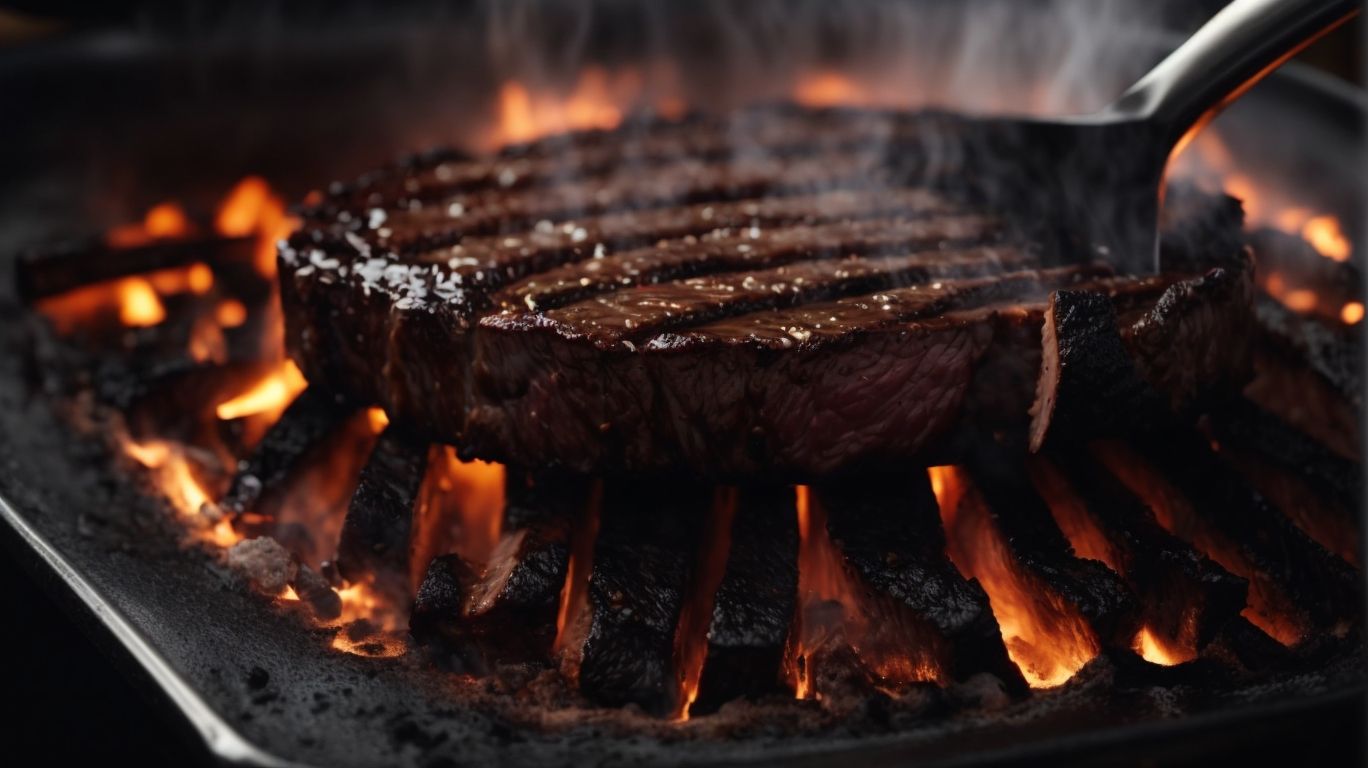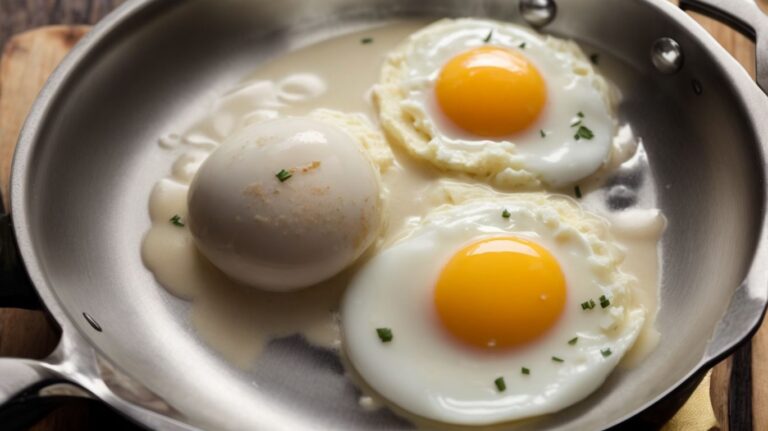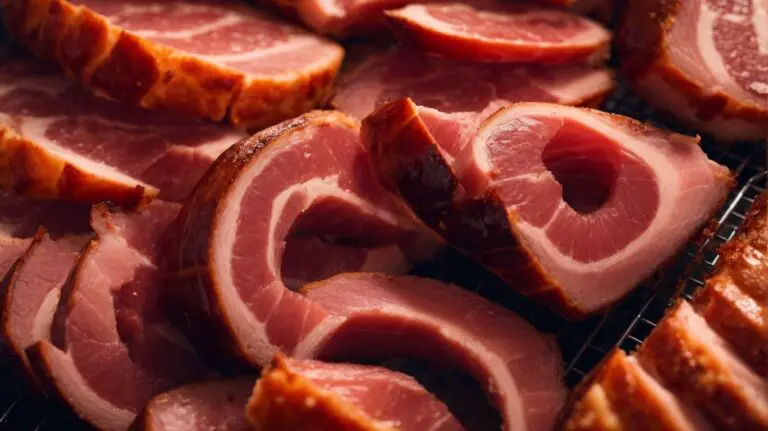How to Cook Filet Mignon?
Welcome to the ultimate guide on how to cook the most luxurious cut of beef – Filet Mignon!
In this article, we will explore everything you need to know about Filet Mignon, from where it comes from to how to choose the best cut, how to prepare it for cooking, the best cooking methods, and tips on serving and enjoying this delectable steak.
Get ready to elevate your culinary skills and impress your guests with perfectly cooked Filet Mignon!
Key Takeaways:
What is Filet Mignon?
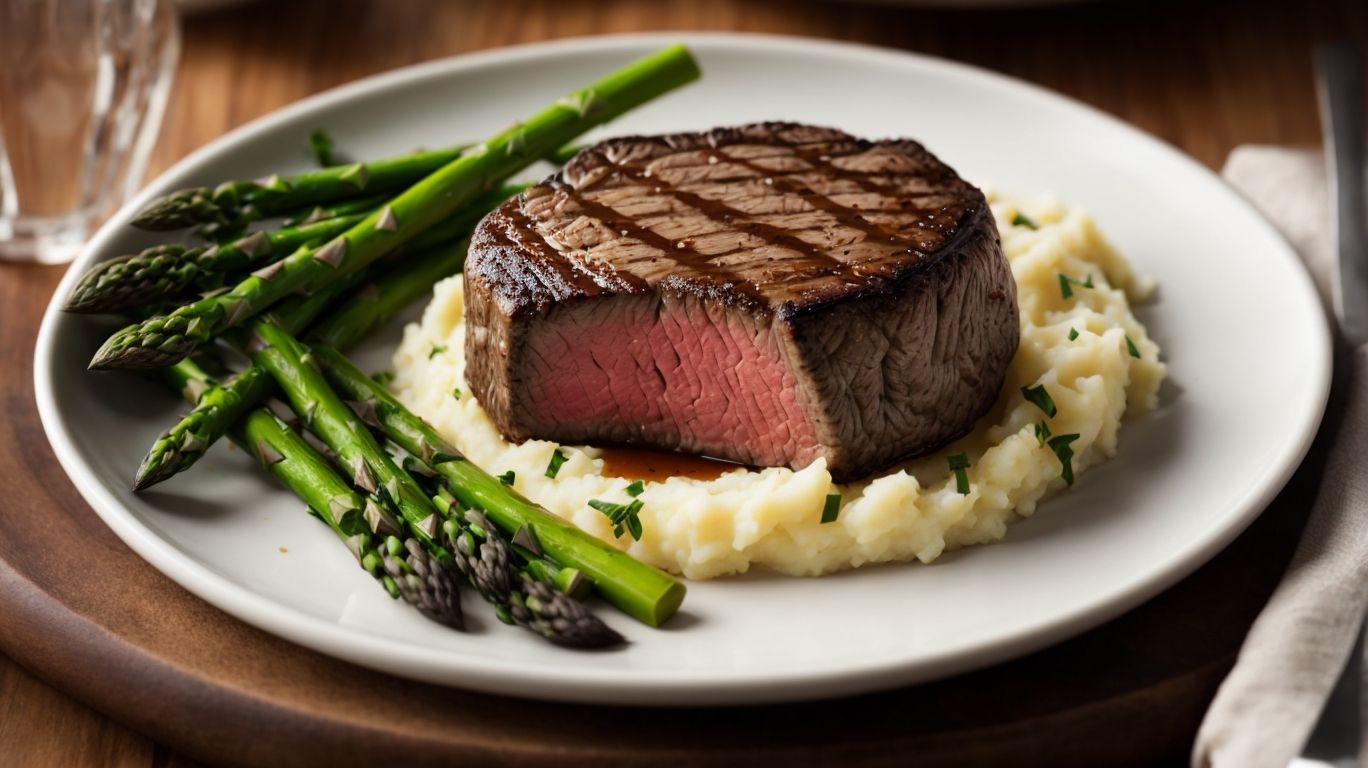
Credits: Poormet.Com – Harold King
Filet Mignon, a premium cut of meat, is renowned for its tenderness and exquisite flavor.
Derived from the tenderloin section of the beef, this luxurious steak boasts a melt-in-your-mouth texture, making it a favorite among steak enthusiasts worldwide. Due to its low fat content, the Filet Mignon is often wrapped in bacon to add extra juiciness and flavor during cooking. Its popularity stems not only from its unparalleled tenderness but also from its versatility in culinary applications, whether grilled, pan-seared, or broiled. When prepared to perfection, this delectable cut embodies the epitome of fine dining, making it a sought-after choice for special occasions.
What Part of the Cow Does Filet Mignon Come From?
Filet Mignon comes from the tenderloin steak area of the cow, known for its lean and tender meat.
The tenderloin steak, also referred to as Filet Mignon, is nestled within the back of the cow, a less worked muscle, producing its famed tenderness. This premium cut is shielded by surrounding muscles, resulting in its lean nature and extraordinary tenderness, making it one of the most sought-after steaks globally.
The Filet Mignon stands out for its fine texture and mild flavor, often requiring minimal seasoning to enhance its natural taste. When cooked to perfection, it melts in the mouth, delighting meat connoisseurs with its buttery soft consistency.
What Makes Filet Mignon a Premium Cut of Meat?
Filet Mignon’s distinction as a premium cut of meat stems from its exceptional tenderness and rich, savory flavor profile.
One key factor that sets Filet Mignon apart is its unmatched tenderness, attributed to its location on the animal – the tenderloin muscle. This muscle, containing minimal connective tissue, results in a velvety texture that practically melts in your mouth with each bite. The minimal marbling in Filet Mignon also contributes to its tenderness, making it a sought-after choice for those who appreciate a luxurious dining experience.
How to Choose the Best Filet Mignon?
Selecting the best Filet Mignon involves considering factors like marbling, color, and freshness to ensure a top-quality purchase.
In terms of marbling, which refers to the visible flecks of fat within the meat, a higher marbling score typically indicates better flavor and tenderness in the Filet Mignon.
Checking the color of the meat can provide insights into its freshness. Opt for Filet Mignon with a vibrant red hue, as it indicates that the meat is fresh. The feel of the meat can also be a visual indicator; a firm yet slightly yielding texture is what you should look for in a high-quality Filet Mignon.
What to Look for When Buying Filet Mignon?
When purchasing Filet Mignon, look for cuts with ample marbling and vibrant color to guarantee a flavorful and tender dining experience.
Pay attention to the freshness of the meat as this can greatly impact the overall taste and texture of the dish. Opt for Filet Mignon cuts that are bright red in color, indicating they are fresh. The appearance of the meat should be firm and have a fine texture, with a minimal amount of visible connective tissue.
Quality Filet Mignon should have a delicate flavor that is enhanced by the marbling within the meat. The marbling, which refers to the intramuscular fat, should be evenly distributed throughout the cut, ensuring a juicy and succulent bite with every mouthful.
When selecting your Filet Mignon, consider the grade of the beef, with USDA Prime being the top grade for tenderness, juiciness, and flavor. Keep in mind that while higher grades may come with a higher price tag, the quality and dining experience they offer are often worth the investment.
What is the Best Way to Store Filet Mignon?
To maintain Filet Mignon’s freshness, store it in the refrigerator in an airtight container or wrapped tightly in plastic wrap.
Proper refrigeration is key to extending the shelf life of Filet Mignon. To further enhance preservation, consider vacuum-sealing the meat before refrigeration to prevent exposure to air and potential contaminants. This method helps retain the meat’s moisture and flavors.
Always ensure that the refrigerator temperature is set below 40°F (4°C) to inhibit bacterial growth and maintain food safety standards. Remember to place the Filet Mignon on the lower shelves of the refrigerator to prevent cross-contamination with other perishable items.
When handling Filet Mignon, maintain optimal kitchen hygiene by washing your hands thoroughly before and after touching the meat, using separate cutting boards for meat and vegetables, and sanitizing surfaces to prevent cross-contamination.
Preparing Filet Mignon for Cooking
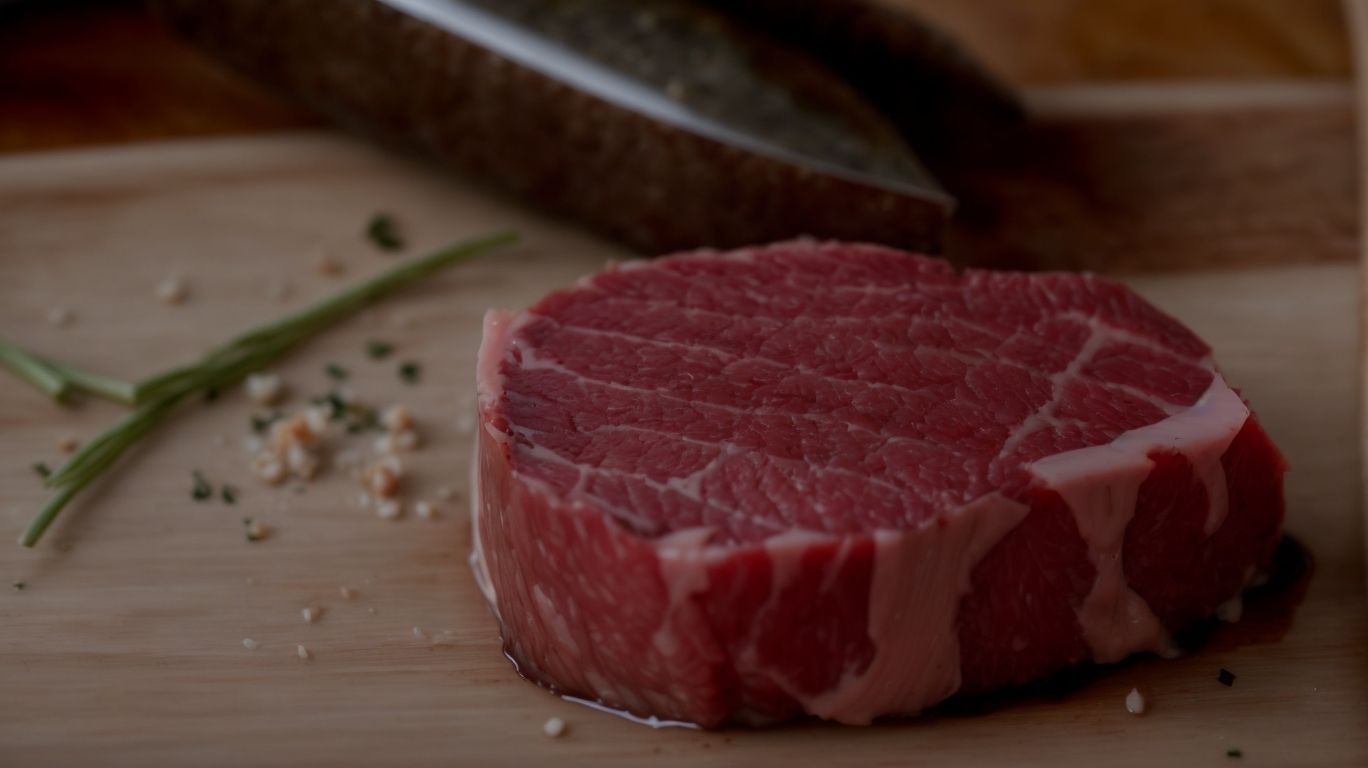
Credits: Poormet.Com – Sean Torres
Before cooking Filet Mignon, consider whether to marinate or season it based on your desired flavor profile and culinary preferences.
Marinating Filet Mignon can add depth and tenderness to the meat. You can prepare a marinade using ingredients such as garlic, olive oil, red wine vinegar, and herbs like rosemary or thyme. Allow the steak to marinate in the mixture for at least 30 minutes, or even overnight for maximum flavor penetration.
On the other hand, if you prefer a simpler approach, opt for seasoning the Filet Mignon with a generous amount of salt and pepper. A classic choice is to sear the steak in a hot skillet with a knob of butter and some chopped herbs, like parsley or chives, for a delicious crust.
Should You Marinate Filet Mignon?
Deciding whether to marinate Filet Mignon depends on personal taste preferences and the desired level of flavor infusion and tenderness.
When choosing a marinade for Filet Mignon, it’s essential to select ingredients that complement the rich and delicate flavors of this premium cut. Common marinade components include oil to help tenderize the meat, acidic elements like vinegar or citrus juice to enhance tenderness, and a mix of herbs and spices for flavor depth. Marinating can also be a way to introduce bold flavors like garlic, soy sauce, or red wine, creating a unique culinary experience. Remember, marinating time matters; overnight marination allows the flavors to penetrate deeper, while shorter periods can provide a lighter touch.
How to Season Filet Mignon?
Seasoning Filet Mignon can be done with a blend of herbs, garlic, salt, and pepper to elevate its natural flavors and complement its tender texture.
For a classic approach, a combination of fresh rosemary, thyme, and parsley works wonders, infusing the steak with a fragrant aroma. Garlic can be minced and rubbed onto the steak for a robust flavor profile that seeps into the meat during cooking. For a kick of heat, a dose of crushed red pepper flakes can be added to the seasoning mix to create a tantalizing contrast. A smoked paprika rub can add a delicious smokiness that enhances the overall richness of the Filet Mignon.
Cooking Filet Mignon
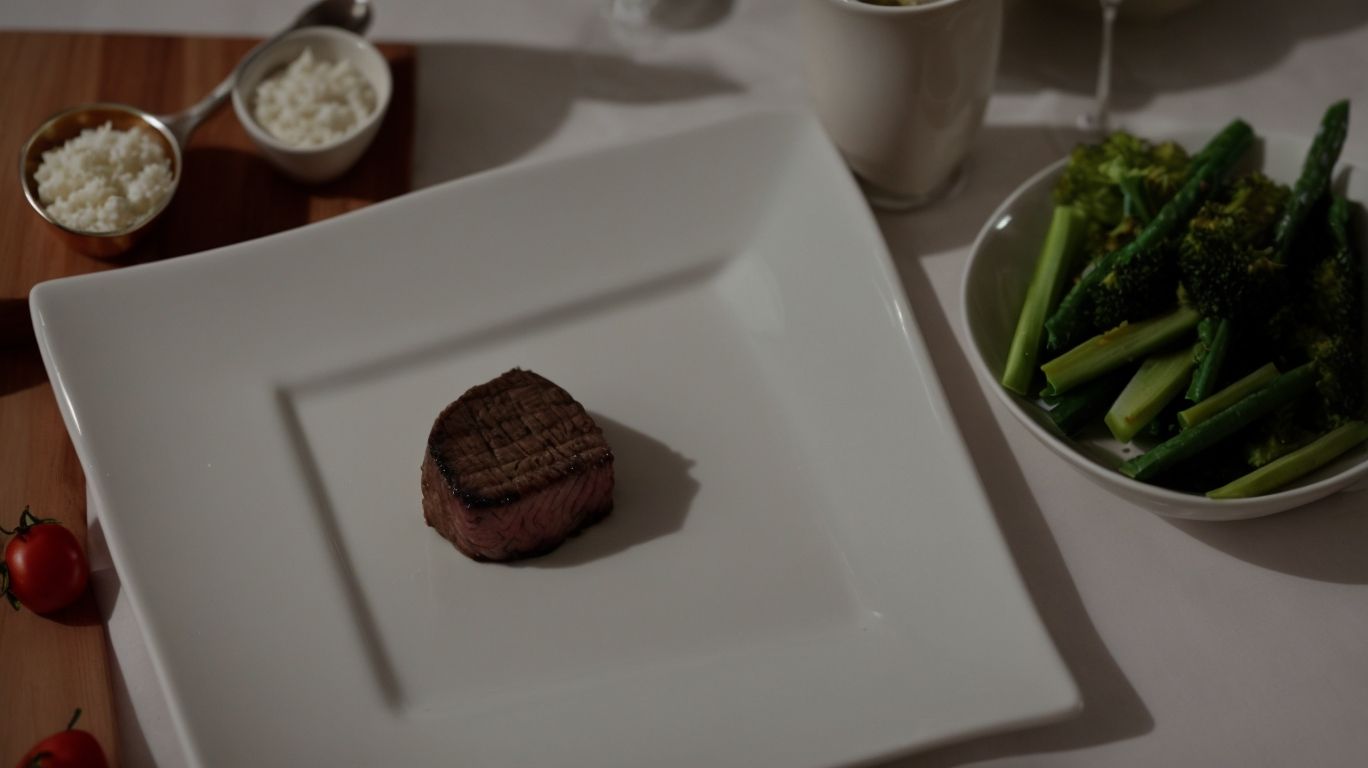
Credits: Poormet.Com – Edward Torres
Cooking Filet Mignon to perfection requires attention to detail, whether grilling, pan-searing, or broiling to achieve the desired level of doneness.
When grilling, it’s crucial to preheat the grill to high heat to achieve a perfect sear on the outside while keeping the meat juicy inside. For pan-searing, a cast iron skillet is ideal for creating a nice crust on the steak. Remember to bring the steak to room temperature before cooking to ensure even cooking throughout.
If broiling, position the oven rack close to the broiler element and preheat it for a few minutes. Season the Filet Mignon generously, then broil it for a few minutes on each side for a perfect medium-rare result.
What is the Best Cooking Method for Filet Mignon?
Determining the best cooking method for Filet Mignon depends on personal preference and the desired level of doneness, whether it’s a quick pan-sear, a slow oven roast, or a flavorful grill.
Each cooking method offers a unique way to enhance the natural flavors of this tender cut of meat.
- Pan-searing produces a delicious crust while keeping the center juicy, perfect for those who love a good sear.
- On the other hand, oven roasting allows for even cooking throughout, ideal for achieving a consistent level of doneness.
- Grilling Filet Mignon imparts a smoky essence, elevating the taste profile and providing those coveted grill marks.
How to Grill Filet Mignon?
Grilling Filet Mignon involves searing it over high heat to create a charred crust while preserving its juicy interior for a delicious dining experience.
When grilling Filet Mignon, it is crucial to preheat your grill to ensure the initial sear locks in the flavors.
- Use a two-zone fire method for optimal grilling; sear the filet over direct heat initially, then move it to the cooler side to finish cooking through without burning the exterior.
For added flavor, consider using wood chips or chunks to infuse a subtle smokiness into the meat, enhancing its taste profile.
How to Pan-Sear Filet Mignon?
Pan-searing Filet Mignon on a stovetop with butter allows for caramelization and flavor development, resulting in a succulent and tender steak.
When pan-searing Filet Mignon, it’s crucial to ensure the skillet is sufficiently preheated to create that perfect sear on the meat. Patting dry the steak before placing it in the hot pan helps to achieve a beautiful crust. The butter basting technique involves spooning hot, melted butter over the steak as it cooks, imparting richness and enhancing the overall flavor profile.
For optimal results, resist the temptation to flip the steak too often to allow the Maillard reaction to work its magic, creating that desirable brown crust. Searing tips include using a high smoke-point oil like grapeseed or avocado oil for searing at high temperatures and ensuring the steak is brought to room temperature before cooking to promote even cooking.
How to Broil Filet Mignon?
Broiling Filet Mignon in the oven at high heat creates a perfectly charred exterior and a juicy, medium-rare interior for a delectable dining experience.
To achieve this culinary delight, preheat your broiler on high and position the rack close to the heat source for optimal searing. Pat the Filet Mignon dry and season generously with salt and pepper or your favorite seasoning mix. Place the steaks on a broiler pan or wire rack over a baking sheet to catch drippings. When broiling, remember to leave the oven door slightly ajar to prevent overheating. Aim for an internal temperature of 130-135°F for that perfect pink center. Let the steaks rest before slicing and serving for maximum flavor retention.
What is the Ideal Internal Temperature for Filet Mignon?
Achieving the ideal internal temperature for Filet Mignon varies based on preference, with medium-rare at around 135°F and medium at 145°F for the perfect balance of tenderness and flavor.
It is crucial to note that the recommended cooking temperatures for Filet Mignon are pivotal in determining the ultimate dining experience. For a rare doneness, aim for an internal temperature of approximately 120-125°F, providing a reddish and cool center. Conversely, a well-done Filet Mignon typically requires a temperature of 160°F or higher, resulting in a firmer texture but riskier potential for dryness. Using a meat thermometer helps in precision cooking, ensuring that your Filet Mignon is cooked just right according to your desired doneness.
Serving and Enjoying Filet Mignon
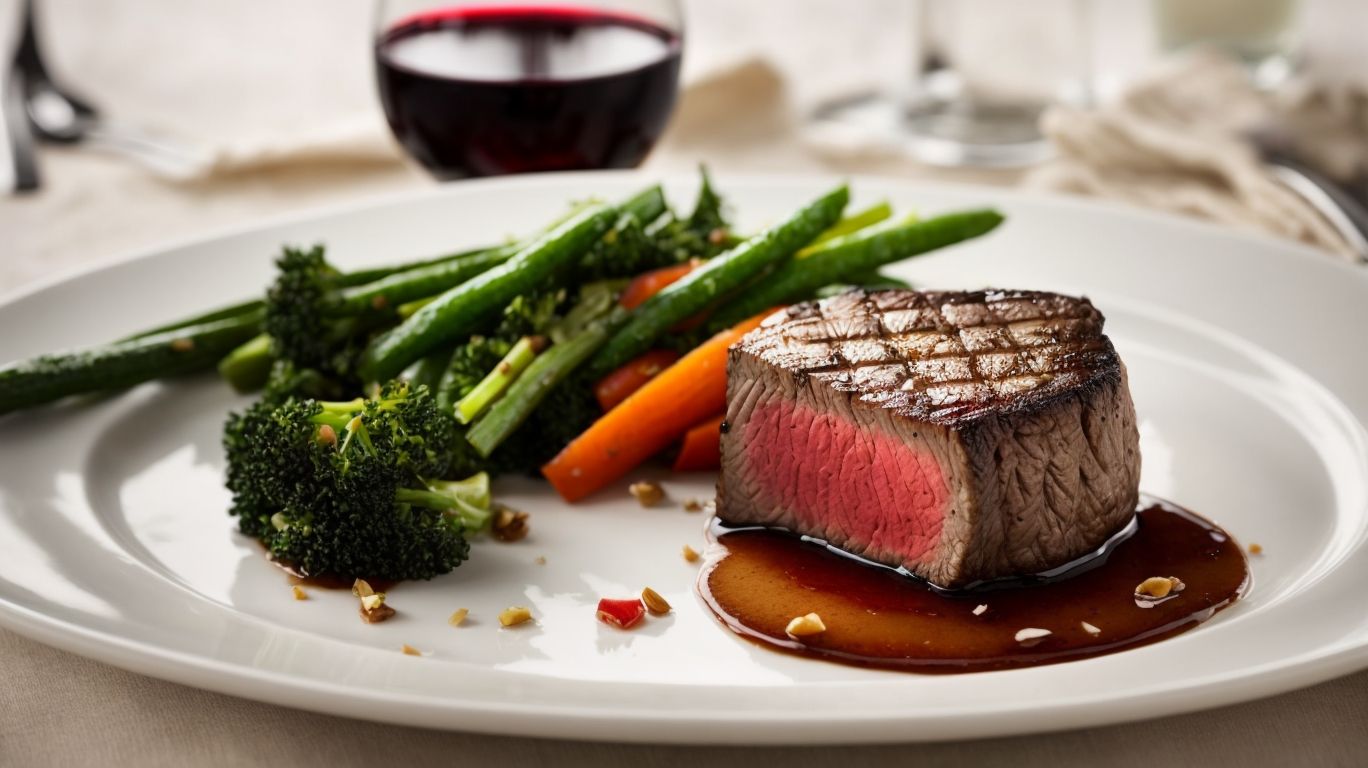
Credits: Poormet.Com – Jonathan Hill
Serving Filet Mignon is a delightful experience, whether paired with a savory sauce, fresh herbs, or complementary side dishes for a memorable dining occasion.
In terms of presentation, serving Filet Mignon rests on the fine balance of elegance and simplicity. A well-prepared surf and turf combination, where the Filet Mignon is accompanied by a succulent lobster tail, can elevate the dining experience to new heights. To enhance the flavor profile, consider a red wine reduction sauce or a classic béarnaise sauce to drizzle over the tender steak, adding a rich depth of taste. For a touch of freshness, a sprinkle of chopped parsley or thyme can add a burst of color and aroma to the dish.
How to Serve Filet Mignon?
Presenting Filet Mignon elegantly on a plate garnished with fresh herbs enhances the dining experience and elevates the visual appeal of the dish.
When serving Filet Mignon, remember that proper plating can make a significant difference. Start by ensuring the steak is sliced against the grain to maintain tenderness and texture. Choose a stylish plate that complements the dish, avoiding overcrowding for a clean presentation. Consider adding a wine reduction sauce drizzle for added flavor and visual flair. Garnish with microgreens or edible flowers to add a pop of color and freshness. Remember, attention to detail in presentation showcases the culinary expertise behind this classic delicacy.
What Goes Well with Filet Mignon?
Pairing Filet Mignon with flavorful side dishes like roasted vegetables, creamy mashed potatoes, or buttery risotto complements the steak’s richness and elevates the dining experience.
In terms of selecting the perfect accompaniments for Filet Mignon, it’s crucial to consider flavors that harmonize with the steak’s tender texture and robust taste profile. Opting for roasted vegetables, such as asparagus or brussels sprouts, adds a delightful contrast of earthy and slightly charred notes to the dish.
Alternatively, the velvety richness of creamy mashed potatoes provides a comforting balance to the Filet Mignon’s savory flavors, creating a harmonious blend of textures on the palate. For a touch of indulgence, buttery risotto offers a creamy and luxurious side that enhances the overall dining experience, making every bite a sensory delight.
What are Some Delicious Sauce Options for Filet Mignon?
Enhance the flavor profile of Filet Mignon with indulgent sauces like garlic herb butter, mushroom demi-glace, or peppercorn sauce for a gourmet dining experience.
Garlic herb butter adds a rich, aromatic touch to the succulent Filet Mignon, infusing it with a delicious medley of flavors. The earthiness of the mushroom demi-glace complements the beefy richness of the steak, creating a savory umami explosion with every bite.
On the other hand, the peppercorn sauce offers a bold, peppery kick that contrasts beautifully with the tenderness of the Filet Mignon. Be it creamy, velvety, or robust, these sauces elevate the steak from great to exceptional.
Frequently Asked Questions
How to Cook Filet Mignon?
Filet mignon is a delicate and highly-prized cut of beef that requires special attention to achieve the desired level of tenderness and flavor. Here are some frequently asked questions about cooking filet mignon:
What is filet mignon?
Filet mignon is a steak cut from the tenderloin of a cow. It is known for its tenderness and mild flavor, making it a popular choice for special occasions and fine dining.
What is the best way to prepare filet mignon?
There are many ways to prepare filet mignon, but the most common and recommended method is to sear it in a hot skillet or grill and finish it in the oven. This helps to create a crispy crust on the outside while keeping the inside tender and juicy.
What is the recommended cooking temperature for filet mignon?
The recommended internal temperature for a medium-rare filet mignon is 135-140°F. Use a meat thermometer to ensure that it reaches the desired level of doneness.
How long should I cook filet mignon?
The cooking time for filet mignon will vary depending on the thickness of the steak and the desired level of doneness. As a general rule, cook 1-inch thick filets for 4-5 minutes on each side for medium-rare, and add 1-2 minutes for medium or medium-well.
What are some recommended seasonings for filet mignon?
Filet mignon has a delicate flavor, so it is best to keep the seasonings simple. Salt, pepper, and a small amount of herbs or garlic can enhance the flavor without overpowering it. Some also prefer to top the steak with a pat of butter before serving for added richness.
Do I need to let filet mignon rest before serving?
Yes, it is recommended to let filet mignon rest for 5-10 minutes before slicing and serving. This allows the juices to redistribute and keeps the steak moist and tender.

